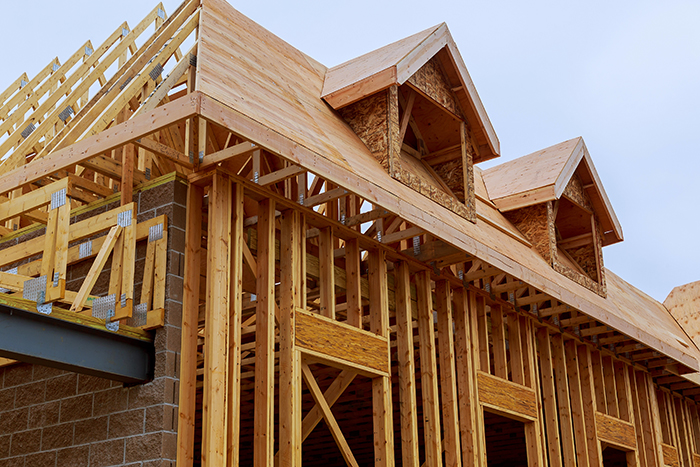With 2022 around the corner, those in the green industry sector may be contemplating buying new equipment to replace aging assets or meet growing service needs. With the pressure of another potential busy season ahead, it’s important to make equipment investments that help the business succeed.
Part of making that decision is weighing the options of whether to lease or buy new equipment. While it’s imperative to plan for purchasing as part of the annual budget planning process, as with all purchases, there must be financial justification, points out Steven Cohen, a senior business consultant for GreenMark Consulting Group, a company based in Henrico, Virginia serving landscape and snow business professionals.
“First, determine if you really need the equipment,” he says. “Many landscape business owners justify need by what I call the ‘I Want Syndrome.’ They purchase equipment because they want it but did not spend the time to determine if they really need it or can afford it.”
Cohen says he justifies a purchase with an understanding that equipment can be used an average of eight months per year for an average of 75% of the time in any given month.
“Second, ask if you can afford the payments,” Cohen says. “You must look at all costs: purchase cost, maintenance, major breakdown expenses and depreciation. By determining your cost to own, you can then determine your cost to operate.”
The income for the equipment over the calculated period should be no less than 2 to 2.5 times operating costs, Cohen notes, adding that anything less calls for renting equipment on a project-by-project basis.
Weigh the costs
Fred Haskett, a principal partner at TrueWinds Lawn and Landscaping Business Consulting, Lake St. Louis, Missouri, says in approaching budgeting, he uses a formula that starts with creating a business plan that considers equipment, safety, financials and sales.
Consider the current reality of the business in its particular area. Look at where it stands in regard to existing equipment and its growth plan with a goal to drive the business to establish the capital expenditures for new equipment or replacement.
Then take on a second consideration: the company’s goals and what is needed to attain them.
Finally, establish a road map for what equipment is needed and when it will be needed.
“Because of the seasonality of the business, purchasing at the beginning of the year for everything is not necessarily the right thing to do,” Haskett notes. “If it’s for a fall service, seeding or aerating or for irrigation equipment, when do you need it? Establish that you’re not buying things prematurely and having them around not generating revenue.”
Buying equipment can be a good option for business owners with enough available cash or credit and confidence that the asset will be used for a long time, notes the Small Business Administration. There are benefits of buying equipment: depreciation can be claimed on taxes, the lifetime cost to buy is usually less than leasing, and it can be counted as an asset on the balance sheet. The disadvantages are that cash or credit is needed upfront, there is less of an opportunity to test out the asset and the owner could be fully liable for maintenance and replacement.
Buying assets with cash means one can own it in full right away, but there also will be less cash available to cover operating expenses, the SBA advises.
While loans can offer some of the same benefits of leases by distributing the total cost over a longer period, it means paying more in fees and interest than buying outright with cash.
Leverage credit lines with the bank or seek other sources for business funding, the SBA advises.
It’s always a good idea to analyze the market for future equipment purchases, notes Haskett.
“If you’re adding a service line, you want to tiptoe and then walk before you start running,” he says.
A good relationship with a small- to medium-sized financial institution helps business owners get the best terms, especially given the tight supply chains in the existing market. Smaller-sized financial institutions are more apt to suggest where a business owner can get a better deal “because they’re trying to buy your loyalty,” Haskett notes.
Consider the timeline
Acknowledging the supply chain challenges over the past year, Haskett advises business owners talk with salespeople and vendors about a reasonable timeline for getting equipment.
“Right now, it’s a little longer than it has been in the past,” he adds.
It’s also critical to understand the cash flow of one’s business as well as the value of the service being provided, Haskett notes.
 Consider the type of work for which equipment purchases will be used. Then analyze whether a piece of equipment fits into the company’s current pricing strategy or if price adjustments need to be made to accommodate its purchase, “taking into consideration that you’re not going to buy something you won’t be able to get a return on investment for in your current pricing schedule and current marketing aspects,” says Haskett.
Consider the type of work for which equipment purchases will be used. Then analyze whether a piece of equipment fits into the company’s current pricing strategy or if price adjustments need to be made to accommodate its purchase, “taking into consideration that you’re not going to buy something you won’t be able to get a return on investment for in your current pricing schedule and current marketing aspects,” says Haskett.
Dealer support is critical. “A lot of people buy the cheapest equipment they can find,” says Haskett, noting he used to do that himself. “I realized the pricing value is the performance of the equipment and the dealer support network. Or if I have an in-house mechanic, is there going to be training necessary for them to maintain the equipment?” A savvy business owner knows how to leverage the best price and best financial terms, says Cohen.
“My suggestion for both is simple: Shop it, bid it and then buy it, meaning check your equipment pricing at a minimum of three equipment dealers. Don’t have them price the equipment. Have them ‘bid’ to earn the sale,” he adds.
“All equipment dealers have multi-tier pricing levels. In a competitive market, most likely one vendor will be more competitive than another.”
The same holds true of financing, says Cohen.
“Most industry-specific finance companies offer an array of payment terms, interest rates based on credit worthiness and amount required to put down,” he adds. “Typically, an industry-specific finance company will be able to offer more favorable terms versus a conventional lending institution.”
Renting and leasing are other alternatives that help keep companies competitive when purchasing doesn’t make financial sense. “A rule of thumb is to rent until the cost of renting exceeds the cost of ownership,” says Haskett.
Case in point: Haskett’s company used to rent air compressors for the fall blowout seasons for its maintenance operations. “We didn’t have a use for an air compressor the rest of the year,” he adds. “We only needed it for 60 days, so we rented it because it was much cheaper to rent them than to own them.”
Sometimes, it takes working with a vendor to make the choice that’s best for one’s business, Haskett says. He’s worked with rental shops with good reputations that didn’t carry particular pieces of equipment that he recognized as useful to landscape contractors. Talking with them, he showed them the rental value of acquiring that equipment.
Some manufacturers offer leasing programs, Haskett points out. “Sometimes leasing is an avenue for saving money or not having to negatively affect your balance sheet,” he adds. “You should look at purchasing, renting and leasing from a situational standpoint so you’re making the best decision for you right now.”
Look at leasing
Leasing is an option for those who need to quickly get a lot of equipment or if the equipment needed is expensive. In some cases, leasing can be less expensive than purchasing with a high-interest loan, the SBA notes. Among the advantages of leasing is needing less cash or credit upfront. A short-term lease allows an operator to test out the equipment. Maintenance is sometimes included at no extra cost. Lease payments for business assets are typically tax deductible.
The SBA notes leasing disadvantages: The lifetime cost is normally higher than buying, equipment replacement when the lease expires could be expensive and depreciation of leased assets typically isn’t tax deductible.
There are two general lease types: operating and capital. Each have different accounting procedures and can have a significant impact on business taxes. An operating lease works like a traditional rental. It does not get added to the balance sheet. Payments are operational expenses. There is low maintenance, risk or tax obligations. A capital lease works more like a loan, according to the SBA. The asset is owned for accounting purposes and is added to the balance sheet. Depreciation and interest expenses are claimed, and one takes on all maintenance, risk and tax obligations.
Leases sometimes have buyout options enabling the business owner to fully purchase the asset at the end of the lease. The length of a lease can vary, with shorter leases having higher monthly payments. Leaving a lease early can mean facing steep early termination penalties. The SBA advises having an attorney review a lease before signing, especially if any of the terms or conditions are unclear.
Cohen advises to be conservative in making smart financing decisions on equipment this year.
“While we have been operating for the last few years with a real uptick in business activity, it is in my opinion that sometime in the next 12 to 18 months, we will be in a more conservative business climate,” he says. “Cyclically, our economy is going to tighten, which will lead to a downturn in consumer spending. Business owners must be smart in preparing for a possible ebb and flow in the economy.”
Hiring a consultant is one of the best ways to help make sense of the market, establishing service lines and making equipment investments, Haskett points out.
“We’re reading the market on a regular basis because we are managing small- and medium- sized businesses and the day-to-day. It’s complicated enough without trying to read the tea leaves on macroeconomic things,” he adds.
Haskett advises his clients to look at their equipment and determine whether it is time to replace equipment that’s wearing out while interest rates are still low.
It’s also worth considering selling off pieces of equipment that are not providing a good return on investment because it’s only being used a few times a year, which goes back to the rental consideration, Haskett says. He’s telling his clients to check pricing and wages and prepare for the possibility of changing inflation.
“Make sure they have enough recurring revenue services and not one-off services, because in a tight market, one-off services go away,” he adds. “Look at your balance sheet, look at your debt, look at equipment loans that are at higher rates or close to being paid off, so you can start to accelerate that and improve your balance sheet by reducing some of your debt service.”





